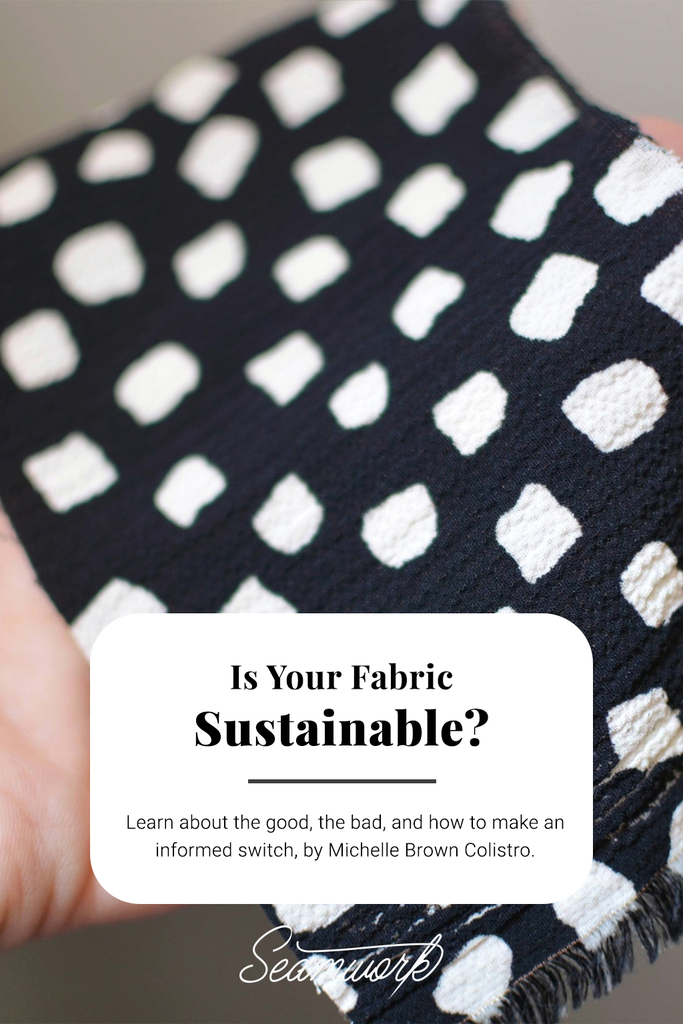Sourcing sustainable fabrics is no walk in the park. Ask any eco-conscious sewist their thoughts and they’ll weave a tale of confusion, conflicting advice, and enough browser tabs open at a time that it looks like they’re midway through a graduate thesis.
Recent Google searches may include: “Is organic cotton better than regular cotton?” “Are rayon and viscose the same thing?” “Wait, what about bamboo?” “And silk???”
Dizzying on the best of days, and downright frustrating on the worst, right? Coming up, we’ll clarify a few of the most confusing claims, sort out which fabrics are truly tough on the environment and hunt down a few cleaner alternatives.
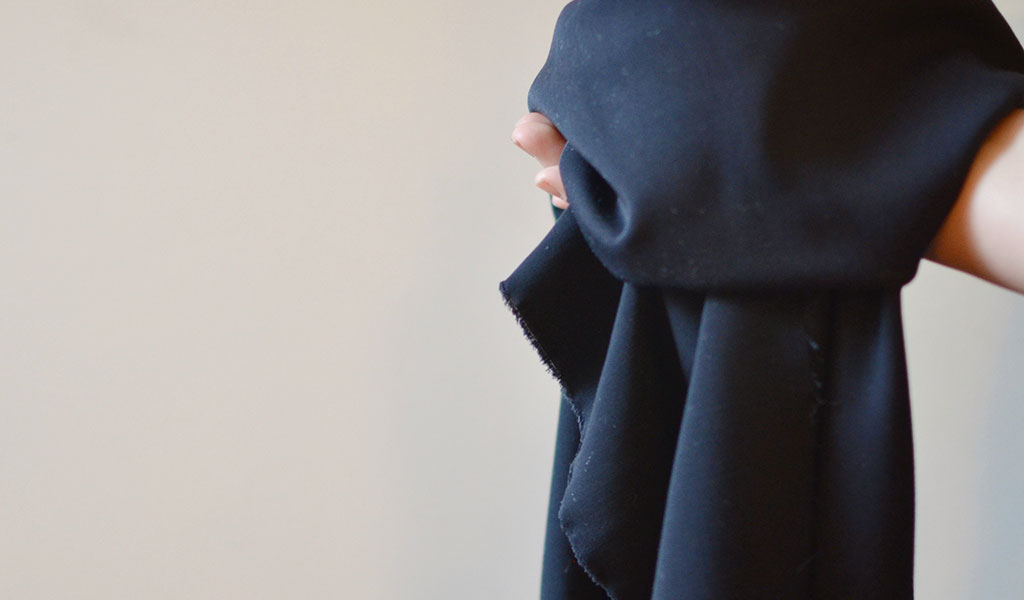
Cotton
The good:
Cheap, easy to sew with and plentiful, cotton is the gateway textile for most new sewists. And for good reason! It’s a dream to press, comes in countless different weights and styles, and is pretty hard to mess up.
100% cotton is natural, of course, and biodegrades fairly easily—if planned for in advance. (Cotton blended with other fibres, or garments sewn with polyester thread, trims or buttons won’t degrade completely).
Cotton also requires fewer emissions to produce than regenerative fibres like lyocell or viscose—only wool, linen and hemp score better.
The bad:
While conventional cotton is a natural fibre, the methods used to produce it are decidedly not. Benefitting from a bit of a green halo, cotton is actually one of the most insecticide and water hungry crops on earth.
In fact, cotton crops gobble up 16% of the world’s insecticides—that’s more than any crop, food or otherwise. 1 kg of cotton (enough to make approximately four dress shirts) requires around 1000 liters of water—water that can’t be recycled or reused as it’s so laden with chemicals. India, the world’s second largest producer of cotton crops, has been suffering from a drought so severe it can be seen from space. In comparison, flax, the fibre used to make linen, requires only 100 litres per 1 kg.
Another ding in cotton’s green halo are the chemicals needed to raise cotton crops. Two billion dollars worth of chemicals are sprayed on the crops each year, half of which the WHO classifies as hazardous. Thousands of cotton farmers die due to pesticide exposure each year.
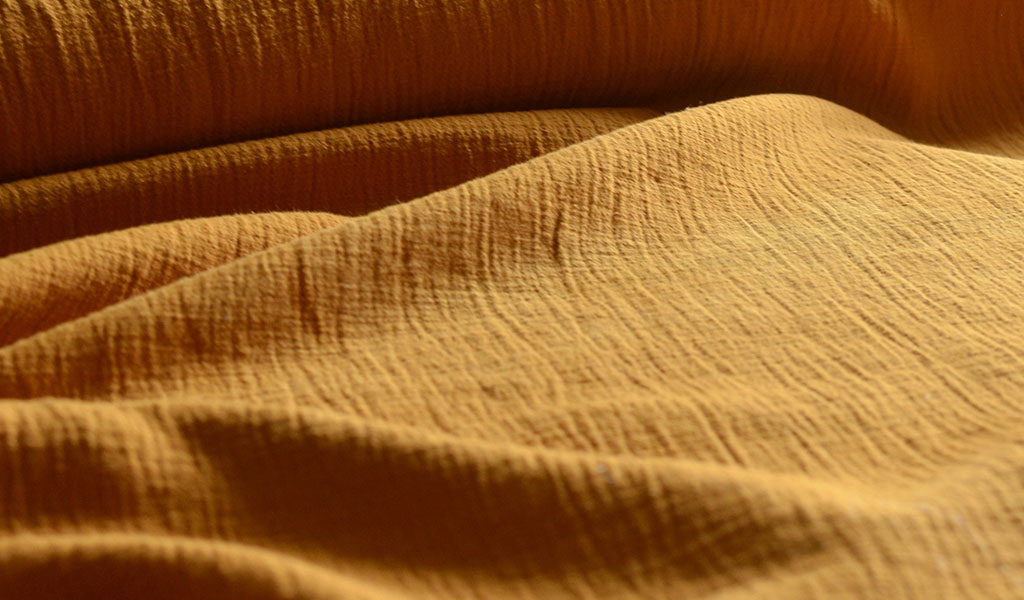
The switch:
In a perfect world, we’d all have unlimited funds to spend on our head-to-toe organic cotton ensembles, but ask my big-city rent why that won’t be happening any time soon.
Luckily, as plentiful as ‘new’ cotton is, it’s also plentiful in other sources too—namely from deadstock suppliers and in thrift and resale shops.
Deadstock suppliers are often overflowing with cotton—RTW brands still use it in droves, meaning that plenty makes its way downstream and is sold off to jobbers, who then sell it to fabric suppliers. (A tip: if your favourite fabric shop doesn’t have a “deadstock” section, search or filter for “designer!")
Thrift stores are also overflowing with the stuff. And check the bedding and curtain aisles, too! A crisp white sheet is now your next crisp white button-up.
Recycled cotton is also a good bet, albeit tricky to find by the yard. It requires less water and energy to produce, and requires no new cotton to be farmed.
And yes, organic cotton. It is more expensive. And it can be a bit of a pest to hunt down. It’s no silver bullet, either—the farm yields are up to 60% smaller than with conventional cotton.
But the other numbers don’t lie: with organic cotton, surface and groundwater use falls 91%. There is 70% less acidification of the soil. Energy use falls 60%. And the rumours are true: it is actually softer. (As organic cotton is still usually picked by hand, the fibres stay intact, creating a softer hand).
Looking for a different fibre altogether? Linen, that ol’ sustainability standby, can easily mimic the casual drape and breathability of a breezy cotton.
Wool
The good:
A fibre in a class of its own, this insulating powerhouse is biodegradable and requires minimal energy and water to process. Naturally wicking and antimicrobial, the finished garment also requires less washing than cotton, reducing total emissions.
The bad:
Any end product that uses large, land-grazing mammals is going to be … not the greatest for the environment. (See: cows). Sheep require large pastures to be cleared for their care, and the methane released from these little cuties is a contributor to global warming. In fact, on many textile environmental benchmarks, wool actually scores below polyester for environmental impact. (Of course, this is only one piece of the pie—polyester has got its own problems.) And practices like mueseling often mean wool production isn’t great for the sheep themselves, either.
The switch:
Finding sustainable wool can be tricky, but contacting your suppliers is a good start. You can ask where the sheep are raised, and how they’re treated. A few certifications to ask about are Responsible Wool Standard, ZQ Merino Standard and the Soil Association Organic Standards. And while many suppliers can’t afford or access these certifications, they may be able to pass your question along to someone who can answer your questions. (Most customer service representatives won’t know this off the bat, but there’s a good chance they know someone who can find out.)
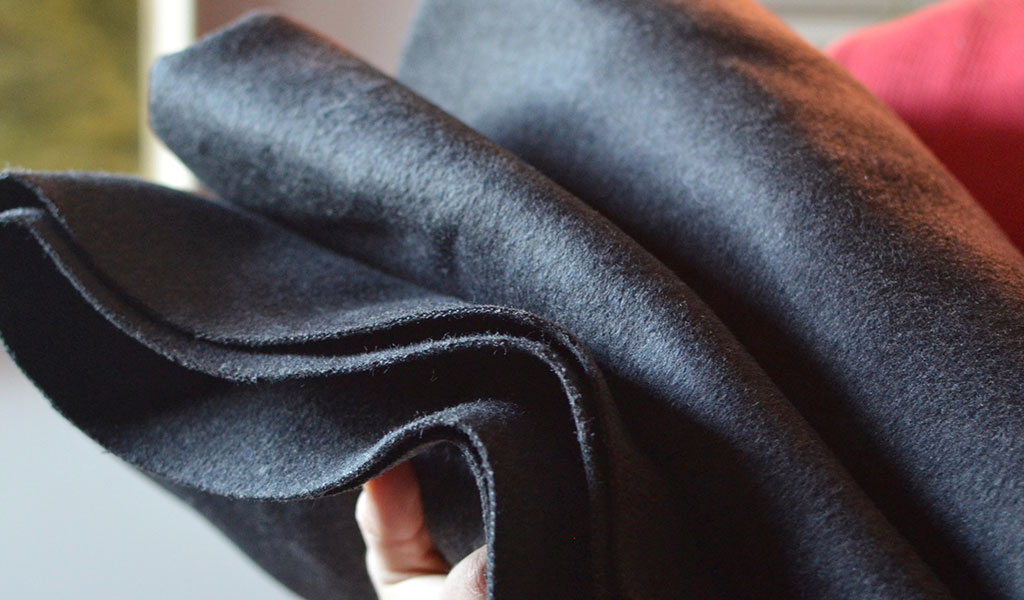
Recycled wool is becoming more popular in RTW clothing, but quite difficult to find by the yard. However, a bit of clever recycling of your own might do the trick! A heavy wool blanket found in your attic can easily become a dramatic winter coat, or a men’s overcoat can be cropped into a boxy jacket for spring.
Viscose, Rayon and Bamboo
The good:
In my imaginary sewist’s dictionary, you’d look up ‘drape’ and find rayon right beside it. Swooshy, wooshy and breathable, it’s often the first fabric new sewists fall in love with (hi, me very much included).
These three aforementioned fabrics are actually all substrates of rayon. Cellulosic fibres, created from wood, fibre crops or bamboo plants, are then chemically altered to create the drapey fibre we know and love.
Rayon, bamboo and viscose are biodegradable and don’t require the use of any petrochemicals to make them, like polyester. Many of the raw materials used to produce cellulosic fibre are, indeed, quite sustainable. Bamboo, for example, is infinitely renewable, requires no pesticides and grows rapidly.
The bad:
Sadly (but, the drape!), this is another group of fabrics that benefits from a false green glow. Most sustainability claims centre around the renewability and ‘natural’ origins of the raw material, and not the processing required.
Here’s where it gets nasty. In order to produce these rayon substrates, their raw material is churned with carbon disulfide. Carbon disulfide is incredibly toxic to humans and the environment and, as these solvents are unable to be reused, are often released into surrounding waterways, ecosystems and lungs. A 1974 study on viscose workers done over 15 years showed 48% of them displaying some form of degenerative nerve disorder. America was known for their rayon processing plants, until rampant health concerns forced the trade to close, moving production to developing nations. Test results from outside the ABG factory, India’s largest viscose manufacturer, showed air quality levels of carbon disulfide at 125 times the WHO’s guideline values.
The switch:
Have no fear, lyocell is here! Commonly referred to by the Lenzing-trademarked name Tencel™, lyocell is another cellulosic fibre with a much happier origin story. Dissolved in a non-toxic amine oxide solvent instead of the nasty carbon disulfide, this step substantially lessens damage to workers, and surrounding pollution levels in the water and air. Even better? More than 99.5 percent of that solvent is able to be recovered and reused, effectively closing the loop.
Lenzing-branded Tencel™ comes with a guarantee that their wood pulp is sourced from fully-accredited & sustainably-managed forests. Other non-branded lyocell suppliers source from sustainably-managed forests too, but this may require a quick email to the fabric store or supplier to confirm.
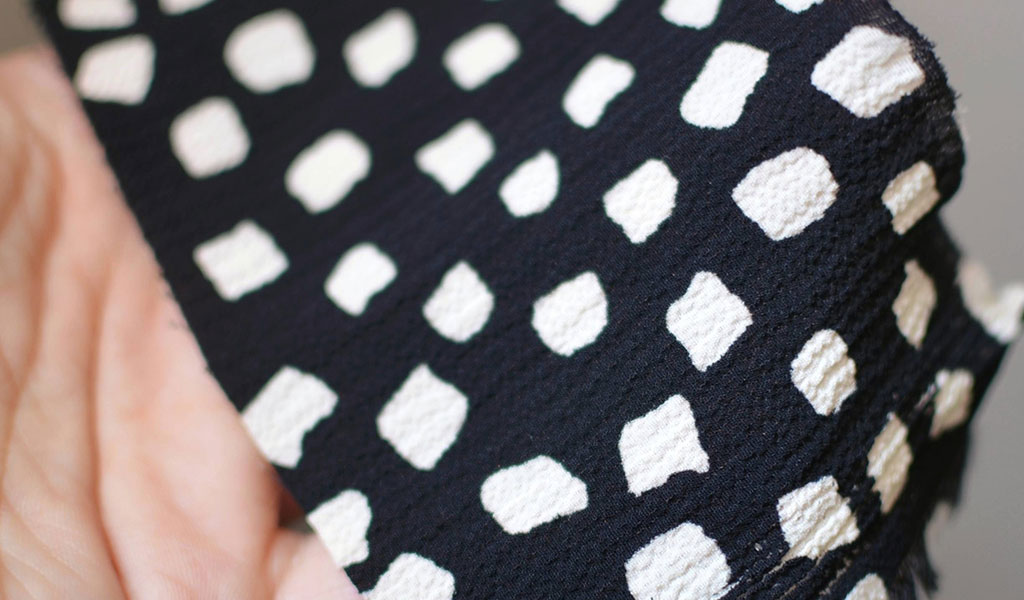
Polyester
The good:
Ah, polyester. Famously cheap and wrinkle-free, and sworn enemy to hot irons everywhere. As much as it's publicly derided, we’ve allll dabbled. While it has a (deservedly so) tarnished reputation for being an environmental black spot, it does require minimal water to produce so there’s … that.
The bad:
It’s not biodegradable—every fibre of polyester in existence will continue to exist in some capacity, as it breaks down into smaller and smaller microfibres, bioaccumulating in our ecosystems and waterways. But it’s not just the end of a garment’s life that you need to worry about—microfibres, shed each time a polyester garment is washed, are being swept up into our waterways at a rapid, increasing pace.
The switch:
Recycled polyester is not a bad alternative. That is, if it’s laundered in a microfibre-catching wash bag! Recycled polyester is usually recovered from a mix of post-consumer textile waste (the old sports bras you stuff into the collection bins at H&M) and plastic waste. It requires fewer emissions and less water to produce than virgin polyester and, obviously, less plastic.
However, recycled polyester is still plastic. And unless you’re diligent about your microfibre-catching, is still not the most eco-friendly choice. Watch out for natural fibres blended with poly—their inclusion will make it hard, if not impossible, for the garment to decompose fully. (And yes, that includes thread.) Looking for something with the drape of a polyester crepe? Lyocell should do the trick—but lug out the iron, as it will wrinkle.
Sustainability is a spectrum, and every little move you make to nudge the needle is one worth celebrating...
Silk
The good:
The boss level of sewing, silk is a slippery, sumptuous, tactile dream. As a natural fibre, it will decompose fully and mulberry trees, where silkworms take up residence, require few pesticides, can be grown organically and require less water than cotton plants.
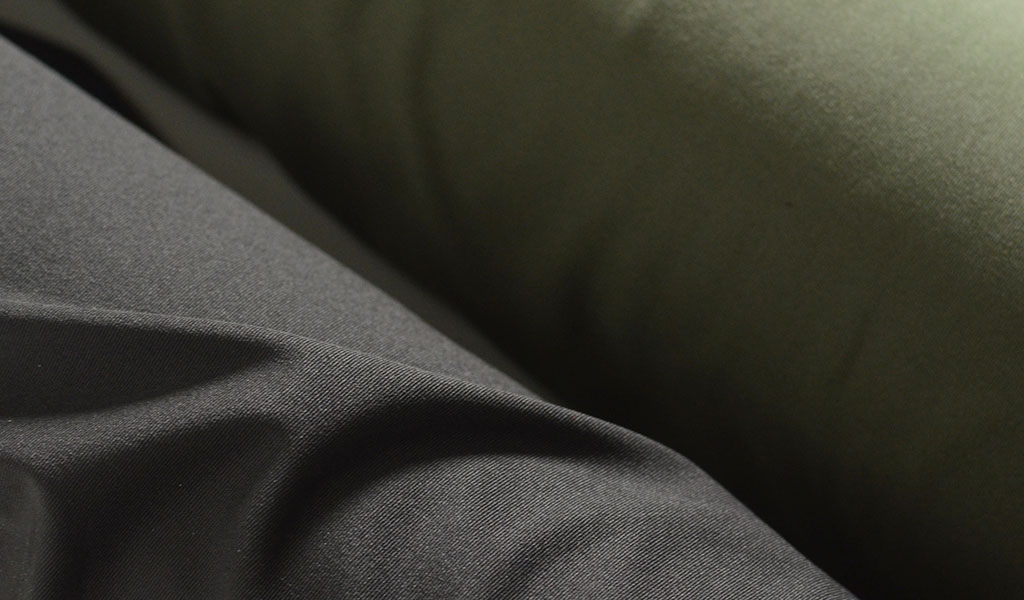
The bad:
There’s no way to sugarcoat this one—silkworms are killed to produce silk. (Peace silk, while prohibitively expensive for most, allows the silk worms to emerge from their pupae naturally). However, the pupae don’t go to waste—they’re often used to make a crunchy snack or used as fertilizer. More ominously, the silk trade is still notoriously reliant on child and low-paid labour.
The switch:
Silk noil, woven from the short waste fibres from the cocoons used in traditional silk processing, makes use of waste in an ingenious way. With a hand and drape similar to cotton, it’s a way to incorporate silk into a casual wardrobe—and is often less expensive as well. However, this doesn’t remedy any ethical concerns. Looking for something with dramatic drape, or lining fabric? Yooooou guessed it—lyocell it is. Lightweight organic cotton batiste is also great for lining cotton garments.
Phew—still with me? You’re not alone if you’re overwhelmed. Nearly every substrate and blend of fabric has pros and cons. And we haven’t even scratched the surface of ensuring fabric is harvested, spun and made ethically—as sustainable does not always equate to ethical.
Luckily, the power is in your hands. Check with your favourite fabric stores, and see if they can answer your questions. Oftentimes, they’ll have direct lines to the factories, who can provide certifications and ensure their employees are well cared for and safe.
And so much of sustainable sewing comes in how we care for our finished garments. Even if the higher-priced sustainable fabrics are out of reach, a hand washed shirt vs. one thrown in a warm wash and a hot dryer is an excellent step in the right direction. Mending, darning and taking care to double stitch seams and properly finish seam allowances can lower the total carbon footprint of a garment, too.
We are incredibly privileged to have the time, the means and the methods to sew our own clothes. Sustainability is a spectrum, and every little move you make to nudge the needle is one worth celebrating—whether that’s scouring a thrift store for curtains that are soon to be swooshy culottes, or splurging for some luxurious organic cotton.


